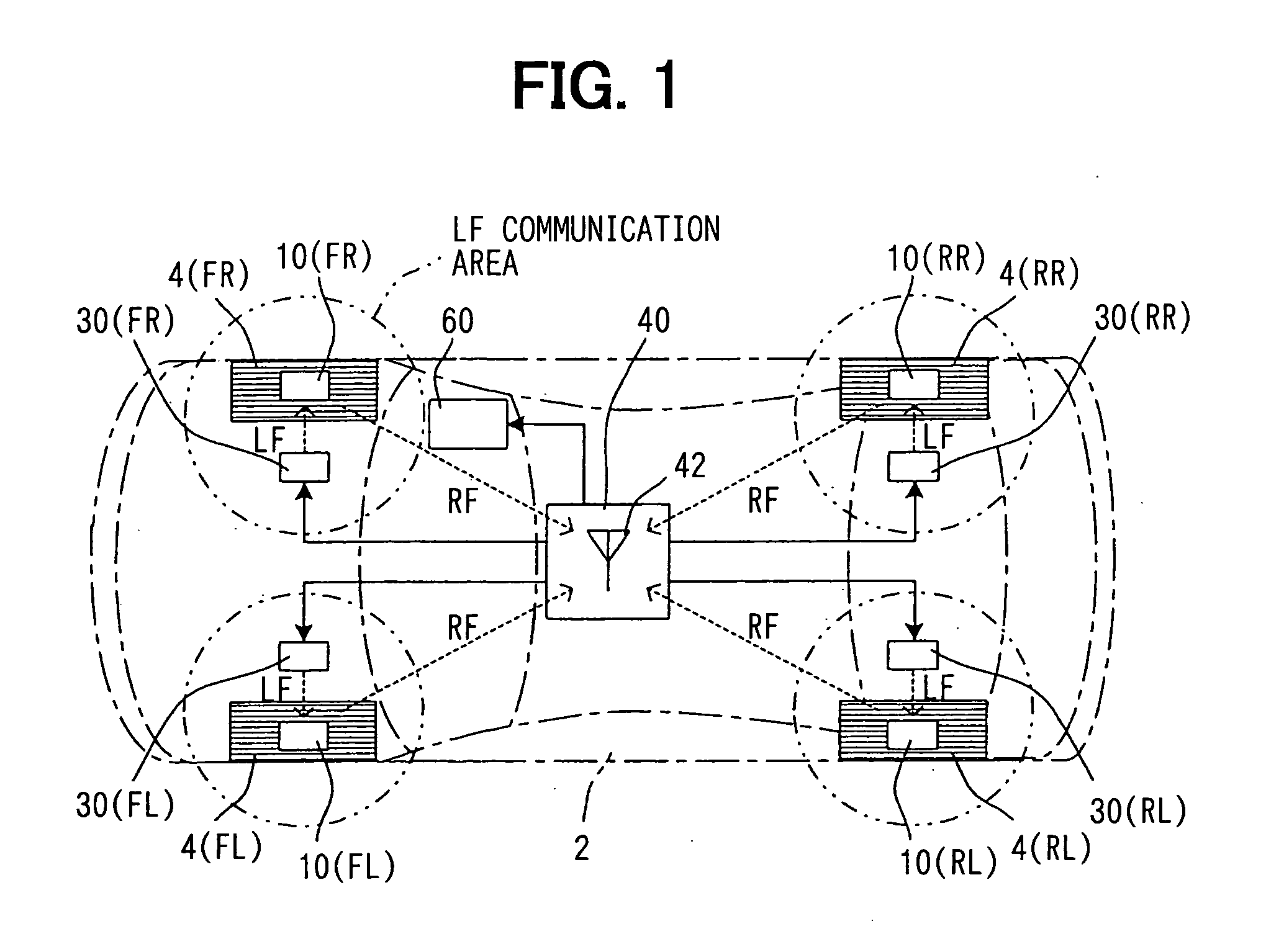Tire condition monitoring system
a condition monitoring and tire technology, applied in the direction of tyre parts, process and machine control, program control, etc., can solve the problems of insufficient power saving in the method, high energy consumption in the detector, confusion among the data, etc., and achieve the effect of minimizing the power consumption of the detector
- Summary
- Abstract
- Description
- Claims
- Application Information
AI Technical Summary
Benefits of technology
Problems solved by technology
Method used
Image
Examples
first embodiment
[0029] the present invention will be described with reference to FIGS. 1-5. As shown in FIG. 1, a tire condition monitoring system according to the present invention is composed of: a detector 10 installed in each tire 4 of an automotive vehicle 2; a transmitter 30 positioned in the vicinity of each tire 4; a monitor 40 mounted on the vehicle; and an informing device 60. The tire 4 includes a front left tire 4(FL), a front right tire 4(FR), a rear left tire 4(RL) and a rear right tire 4 (RR). The detector 10 includes a front left detector 10 (FL), a front right detector 10 (FR), a rear left detector 10 (RL) and a rear right detector (RR). The transmitter 30 includes a front left transmitter 30(FL), a front right transmitter 30(FR), a rear left transmitter 30(RL) and a rear right transmitter 30(RR). Since all of the detectors 10 are identical, each of the detectors 10 will be simply referred to as a detector 10. Similarly, since all of the transmitters 30 are identical, each of the t...
PUM
| Property | Measurement | Unit |
|---|---|---|
| radio frequency | aaaaa | aaaaa |
| frequency | aaaaa | aaaaa |
| pressure | aaaaa | aaaaa |
Abstract
Description
Claims
Application Information
 Login to View More
Login to View More - R&D
- Intellectual Property
- Life Sciences
- Materials
- Tech Scout
- Unparalleled Data Quality
- Higher Quality Content
- 60% Fewer Hallucinations
Browse by: Latest US Patents, China's latest patents, Technical Efficacy Thesaurus, Application Domain, Technology Topic, Popular Technical Reports.
© 2025 PatSnap. All rights reserved.Legal|Privacy policy|Modern Slavery Act Transparency Statement|Sitemap|About US| Contact US: help@patsnap.com



